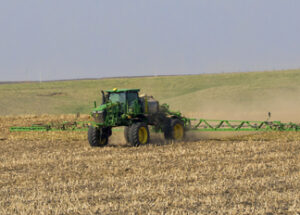
Start the Season off by Getting Spray Records in Order
With the development of herbicide resistant weeds and the adoption of so many different trait packages, many farmers have gone back to spraying their own herbicides. By spraying their own they are in greater control of application timing and reduce the risks of tank contamination in the sprayer. These are great benefits but come with added responsibility, including the need to keep thorough spray records. I have recently experienced a grower getting called on by the state to produce spray records for Restricted Use Pesticides (RUPs). The event has shown me that a majority of growers are wholly unprepared should the state come knocking on their door. As we begin a new growing season, I encourage all growers who spray their own herbicides to work on improving record keeping. Begin with pre-emerge herbicides even if they are not RUPs, for some additional practice. Take some spring rain days to create notes or maps of the fields around yours and understand what your neighbors will be planting. Not only are these records already REQUIRED, it is likely more and more farmers will be called on to produce records as environmental protection and increased scrutiny of pesticides becomes more common under the current administration.
A reminder of required information when spraying RUPs but it doesn’t hurt to collect it for all herbicide, insecticide, or fungicide applications.
- Pesticide Name, Active Ingredient, and EPA Number. (All are found on the label)
- Amount of each pesticide used
- Description/Location of Treated Area, including acres and crop
- Date of Application
- Name of applicator and applicator’s certification number.
While not required for all RUPs, the following is required for dicamba application and is good practice to keep for other pesticides
- Wind speed and direction
- Temperature and Humidity
There are multiple ways to keep track of spray records including old fashioned pen and paper to specialized apps such as RRXTEND SPRAY app or the PESTICIDE AND FIELD RECORDS app (both of which are free). If you use a combination of both, you could also take pictures and screen shots and add them to Field Pins in Climate Fieldview. This would save the records to each field on a GPS located pin that is time stamped.
Here are some record sheets that can be printed off or filled out on the computer. They are designed for dicamba but can be used for any pesticide program.
https://assets.syngenta-us.com/pdf/media/Tavium_RecordKeeping_Form_mech_Interactive_2020.pdf
https://www.roundupreadyxtend.com/Documents/xtendimax-record-keeping-form-v2.pdf
